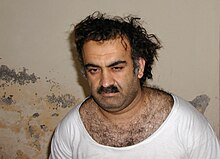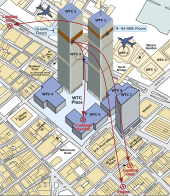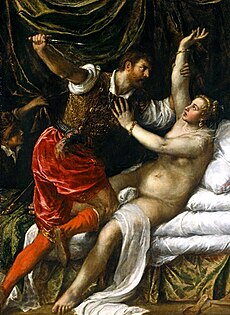Al-Qaeda
The origins of al-Qaeda can be traced to 1979 when the Soviet Union invaded Afghanistan. Soon after, Osama bin Laden traveled to Afghanistan and helped organize Arab mujahideen to resist the Soviets. Under the guidance of Ayman al-Zawahiri, bin Laden became more radical. In 1996 bin Laden issued his first fatwā, calling for American soldiers to leave Saudi Arabia.
In a second fatwā in 1998, bin Laden outlined his objections to American foreign policy with respect to Israel, as well as the continued presence of American troops in Saudi Arabia after the Gulf War. Bin Laden used Islamic texts to exhort Muslims to attack Americans until the stated grievances are reversed, and according to bin Laden, Muslim legal scholars, "have throughout Islamic history unanimously agreed that the jihad is an individual duty if the enemy destroys the Muslim countries."
Osama bin Laden

Bin Laden, who orchestrated the attacks, initially denied but later admitted involvement. Al Jazeera broadcast a statement by bin Laden on September 16, 2001, stating, "I stress that I have not carried out this act, which appears to have been carried out by individuals with their own motivation." In November 2001, U.S. forces recovered a videotape from a destroyed house in Jalalabad, Afghanistan. In the tape, bin Laden is seen talking to Khaled al-Harbi and admits foreknowledge of the attacks. On December 27, 2001, a second bin Laden video was released. In the video, he states, "Terrorism against America deserves to be praised because it was a response to injustice, aimed at forcing America to stop its support for Israel, which kills our people", but he stopped short of admitting responsibility for the attacks.
Shortly before the U.S. presidential election in 2004, in a taped statement, bin Laden publicly acknowledged al-Qaeda's involvement in the attacks on the U.S. and admitted his direct link to the attacks. He said that the attacks were carried out because, "we are free ... and want to regain freedom for our nation. As you undermine our security we undermine yours." Bin Laden said he had personally directed his followers to attack the World Trade Center. Another video obtained by Al Jazeera in September 2006 shows bin Laden with Ramzi bin al-Shibh, as well as two hijackers, Hamza al-Ghamdi and Wail al-Shehri, as they make preparations for the attacks. The U.S. never formally indicted bin Laden for the 9/11 attacks but he was on the FBI's Most Wanted List for the bombings of the U.S. Embassies in Dar es Salaam, Tanzania, and Nairobi, Kenya. After nearly a 10 year manhunt, bin Laden was killed by American forces in Abbottabad, Pakistan on May 1, 2011.
Khalid Sheikh Mohammed

The journalist Yosri Fouda of the Arabic television channel Al Jazeera reported that in April 2002, Khalid Sheikh Mohammed admitted his involvement, along with Ramzi bin al-Shibh. The 9/11 Commission Report determined that the animosity towards the United States felt by Mohammed, the principal architect of the 9/11 attacks, stemmed from his "violent disagreement with U.S. foreign policy favoring Israel".
Mohammed was also an adviser and financier of the 1993 World Trade Center bombing and the uncle of Ramzi Yousef, the lead bomber in that attack.
Mohammed was arrested on March 1, 2003 in Rawalpindi, Pakistan by Pakistani security officials working with the CIA, and is currently being held at Guantanamo Bay. During U.S. hearings in March 2007 Mohammed again confessed his responsibility for the attacks, saying, "I was responsible for the 9/11 operation, from A to Z." Mohammed confessed after waterboarding.
Motives
Osama bin Laden's declaration of a holy war against the United States, and a fatwā signed by bin Laden and others calling for the killing of American civilians in 1998, are seen by investigators as evidence of his motivation. In various pronouncements before and after the attacks, al-Qaeda explicitly cited three motives for its activities against Western countries: the presence of U.S. troops in Saudi Arabia, U.S. support of Israel, and sanctions against Iraq. After the attacks, bin Laden and al-Zawahiri released additional video tapes and audio tapes, some of which repeated those reasons for the attacks. Two particularly important publications were bin Laden's 2002 "Letter to America", and a 2004 video tape by bin Laden.Bin Laden interpreted the Prophet Muhammad as having banned the "permanent presence of infidels in Arabia". In 1996, bin Laden issued a fatwā calling for American troops to get out of Saudi Arabia. In 1998, Al-Qaeda wrote, "for over seven years the United States has been occupying the lands of Islam in the holiest of places, the Arabian Peninsula, plundering its riches, dictating to its rulers, humiliating its people, terrorizing its neighbors, and turning its bases in the Peninsula into a spearhead through which to fight the neighboring Muslim peoples." In a December 1999, interview, bin Laden said he felt that Americans were "too near to Mecca", and considered this a provocation to the entire Muslim world.
In his November 2002 "Letter to America", bin Laden cited the United States' support of Israel as a motivation: "The creation and continuation of Israel is one of the greatest crimes, and you are the leaders of its criminals. And of course there is no need to explain and prove the degree of American support for Israel. The creation of Israel is a crime which must be erased. Each and every person whose hands have become polluted in the contribution towards this crime must pay its price, and pay for it heavily." In 2004 and 2010, bin Laden again connected the September 11 attacks with U.S. support of Israel. Bin Laden claimed in 2004 that the idea of destroying the towers had first occurred to him in 1982, when he witnessed Israel's bombardment of high-rise apartment buildings during the invasion of Lebanon. Several analysts, including Mearsheimer and Walt, also say one motivation for the attacks was U.S. support of Israel. In the 1998 fatwā, al-Qaeda identified the Iraq sanctions as a reason to kill Americans, condemning the "protracted blockade" among other actions constituting a declaration of war against "Allah, his messenger, and Muslims."
In addition to those cited by bin Laden and Al-Qaeda, analysts have suggested other motives, including western support of non-Islamist authoritarian regimes in Saudi Arabia, Iran, Iraq, Pakistan and northern Africa, and western troups in some of these countries. Other authors suggest that humiliation resulting from the Islamic world falling behind the Western world – this discrepancy made especially visible by recent globalization, and a desire to provoke the U.S. into a broader war against the Islamic world, in the hope of motivating more allies to support al-Qaeda.
Planning of the attacks


The idea for the attacks came from Khalid Sheikh Mohammed, who first presented it to Osama bin Laden in 1996. At that time, bin Laden and al-Qaeda were in a period of transition, having just relocated back to Afghanistan from Sudan. The 1998 African Embassy bombings and bin Laden's 1998 fatwā marked a turning point, as bin Laden became intent on attacking the United States. In December 1998, the CIA's Counterterrorist Center reported to President Bill Clinton that al-Qaeda was preparing for attacks in the U.S. that might include hijacking aircraft.
In late 1998 or early 1999, bin Laden gave approval for Mohammed to go forward with organizing the plot. A series of meetings occurred in early 1999, involving Mohammed, bin Laden, and his deputy Mohammed Atef. Atef provided operational support for the plot, including target selections and helping arrange travel for the hijackers. Bin Laden overruled Mohammed, rejecting some potential targets such as the U.S. Bank Tower in Los Angeles because, "there was not enough time to prepare for such an operation".
Bin Laden provided leadership and financial support for the plot, and was involved in selecting participants. Bin Laden initially selected Nawaf al-Hazmi and Khalid al-Mihdhar, both experienced jihadists who fought in Bosnia. Hazmi and Mihdhar arrived in the United States in mid-January 2000. In spring 2000, Hazmi and Mihdhar took flying lessons in San Diego, California, but both spoke little English, did poorly with flying lessons, and eventually served as secondary – or "muscle" – hijackers.
In late 1999, a group of men from Hamburg, Germany arrived in Afghanistan, including Mohamed Atta, Marwan al-Shehhi, Ziad Jarrah, and Ramzi bin al-Shibh. Bin Laden selected these men because they were educated, could speak English, and had experience living in the west. New recruits were routinely screened for special skills and al-Qaeda leaders consequently discovered that Hani Hanjour already had a commercial pilot's license.
Hanjour arrived in San Diego on December 8, 2000, joining Hazmi. They soon left for Arizona, where Hanjour took refresher training. Marwan al-Shehhi arrived at the end of May 2000, while Atta arrived on June 3, 2000, and Jarrah arrived on June 27, 2000. Bin al-Shibh applied several times for a visa to the United States, but as a Yemeni, he was rejected out of concerns he would overstay his visa and remain as an illegal immigrant. Bin al-Shibh stayed in Hamburg, providing coordination between Atta and Mohammed. The three Hamburg cell members all took pilot training in south Florida.
In spring 2001, the secondary hijackers began arriving in the United States. In July 2001, Atta met with bin al-Shibh in Spain, where they coordinated details of the plot, including final target selection. Bin al-Shibh also passed along bin Laden's wish for the attacks to be carried out as soon as possible.
Other al-Qaeda members
In "Substitution for Testimony of Khalid Sheikh Mohammed" from the trial of Zacarias Moussaoui, five people are identified as having been completely aware of the operation's details. They are bin Laden, Khalid Sheikh Mohammed, Ramzi bin al-Shibh, Abu Turab al-Urduni and Mohammed Atef. To date, only peripheral figures have been tried or convicted for the attacks.
On September 26, 2005, the Spanish high court sentenced Abu Dahdah to 27 years in prison for conspiracy on the 9/11 attacks and being a member of the terrorist organization al-Qaeda. At the same time, another 17 al-Qaeda members were sentenced to penalties of between six and eleven years. On February 16, 2006, the Spanish Supreme Court reduced the Abu Dahdah penalty to 12 years because it considered that his participation in the conspiracy was not proven.
Also in 2006, Moussaoui, who some originally suspected might have been the assigned 20th hijacker, was convicted for the lesser role of conspiracy to commit acts of terrorism and air piracy. He is serving a life sentence without parole. Mounir el-Motassadeq, an associate of the Hamburg-based hijackers, is serving 15 years for his role in helping the hijackers prepare for the attacks.